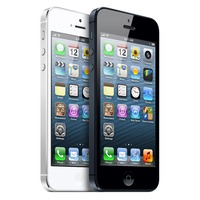Is Apple about to feel Samsung squeeze on iPhone costs?

Apple and Samsung are obviously fierce rivals on smartphones and tablets, but the more interesting duel is likely to happen out of the public eye with displays, processors and supply chain.
According to Jefferies analyst Peter Misek, Apple has a bevy of key supply chain transitions ahead. These transitions are likely to raise the bill of materials to make upcoming iPhones and crimp profit margins. Apple executives noted that the company's profit margins would slip going forward.

Misek estimates that the iPhone 6 bill of materials will be at least 5 percent higher than the iPhone 5. Meanwhile, average selling prices will fall as Apple launches a low-cost iPhone for emerging markets. Bottom line on margins is that Misek sees a gross margin "divot" of 33 percent in the June quarter of 2014.
For Apple's most recent March quarter, gross margins were 37.5 percent, below the 38.63 percent in the December quarter.
Why will margins fall more than 4 points in a year? Misek noted that Apple will have to transition to OLED screens in a series of steps and move to new partners to manufacture processors. Samsung sits right in the middle of both transitions and can squeeze Apple.
Here are the major parts of the iPhone in terms of bill of materials.
Display: Misek said that Apple will have to switch from in-cell screen technology to on-cell. Why in-cell, which cuts the numbers of layers needed to make a display, doesn't ramp well to a 4.8-inch screen. As a result, Apple may move back to on-cell technology, which is more like a display sandwich, and invest in OLED screens going forward.
Misek said:
Apple is having to switch from in-cell to on-cell for the iPhone 6 as in-cell is proving unable to ramp to 4.8”. This new technology is unproven and Apple will incur significant costs to ramp production. We also believe that this is a stopgap technology in front of OLED. We believe it will take Apple and partners two years or more to commercialize OLED as the OLED market for smaller displays is effectively controlled by Samsung who will not supply Apple. In the meantime both LG Display and Japan Display will be forced to be on a dual track for screen technologies for Apple.
However, this transition will raise screen prices by 10 percent to 25 percent for Apple.
Processors: Apple is trying to switch processor manufacturing completely to TSMC and away from Samsung. The problem: Apple need Samsung for its older chips and can't cut over production. Misek said Samsung will start raising prices on legacy chips in the summer which will raise Apple's bill of materials another 20 percent to 30 percent.
Memory: NAND pricing has been solid and is likely to jump 20 percent for Apple. Misek said:
Based on our estimates Apple generates 11% of its operating profits from arbitraging NAND. It uses long-term price and volume contracts to secure supply and price. We believe these contracts are about to roll off and could see 20% or higher price increases.
Overall, Apple is going to see higher iPhone manufacturing costs. Samsung will be a primary reason.
More